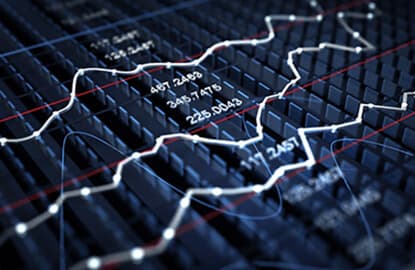
Platinum looks set to outperform in the coming months, based on technical analysis, says Jeffrey Halley, senior market analyst at OANDA Asia-Pacific.
In an Aug 12 commentary, Halley says platinum is showing potential of a very bullish set-up. “It appears to be consolidating a very big inverse head and shoulders formation [see graph], which if correct, points to a substantial rally ahead. Platinum has been doing this very nicely for the last two weeks.
“As shown in the chart, the distance from the head to the neckline is US$305.60. From a technical perspective, the precious metal should start climbing soon to a target of US$1,415.60, with US$1,110 being the break.”
In the past two decades, platinum has traded higher than gold. But it has been trading at a bargain since the first half of 2015. According to Bloomberg data, the spot price of platinum was US$1,114 on Aug 17, lower than gold at US$1,344.
Platinum is in high demand as nearly half the annual supply goes to the auto industry in the form of vehicle emissions control devices. Fine jewellery accounts for about a third of the platinum mined each year.
Platinum jewellery is a lot more expensive than gold due to the fact that is it less malleable and is extremely long wearing. While white gold eventually wears off and fades to a yellowish tinge, platinum does not lose its natural colour.
Investors seeking exposure to platinum have four ways to invest in it — exchange-traded funds (ETFs), futures contracts, physical metal in the form of coins or bars, and stocks. In an email response to Personal Wealth, Halley says that while ETFs are the easiest and most cost-effective way to add platinum to a portfolio, it depends on the individual investor.
“It depends on how close you think we are to Armageddon. If you think the four riders of the Apocalypse are just over the horizon, then you should be buying physical metal and putting it under the floorboard,” he says.
“Otherwise, as part of a defensive portfolio, then ETFs are the way to go. For less volatile, longer-term exposure, you could look at buying platinum mining stocks or American Depositary Receipts.”
Halley says although platinum, palladium and gold are regarded as stores of wealth, their prices do not correlate during crises. Therefore, a sensible portfolio should have a healthy proportion of these precious metals.
“Different crises have seen different combinations of these metals bought as safe-haven investments. On this basis, if one was looking to diversify, you would almost certainly wish for all three in your crisis portfolio to cover all the bases,” he says.
According to Zacks Equity Research, high jewellery and industrial demand caused the price of platinum to hit a 17-month high of US$1,180 per ounce on Aug 10. Halley says the heavy industrial demand and concentrated production is causing platinum to be a lot more volatile than gold and silver.
“About 70% to 80% of platinum production is concentrated in Russia and South Africa. Platinum is much rarer than gold and has a big industrial use in catalytic converters. Therefore, supply disruptions, cartel-like behaviour, an industrial alternative coming along, or political upheaval threats in either of those countries all combine to make platinum the most volatile of the three metals.”
OANDA is an industry leading online trading platform. It also provides currency conversion, online retail foreign exchange (forex) trading, online foreign currency transfers and forex information.
Save by subscribing to us for your print and/or digital copy.
P/S: The Edge is also available on Apple's AppStore and Androids' Google Play.